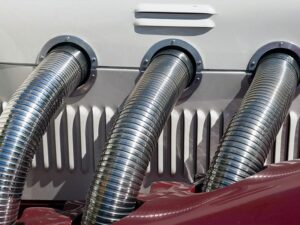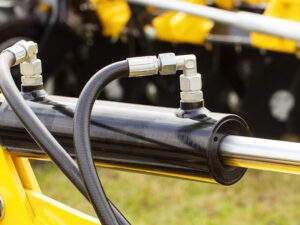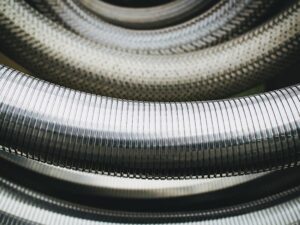Introduction
Metal hoses play a vital role in piping systems, widely used across industries such as manufacturing, energy, chemical processing, and construction. Known for their excellent flexibility and durability, metal hoses are indispensable for conveying high-pressure and high-temperature fluids, as well as absorbing equipment vibrations. This article explores the key performance features, main applications, and buying considerations of metal hoses to help you make informed decisions.
Key Performance Features of Metal Hoses
1. Material and Construction
Metal hoses are typically made from stainless steel (such as 304, 316L) or high-alloy materials, providing excellent corrosion resistance and mechanical strength. Their structure usually consists of an inner corrugated tube for fluid sealing and an outer braided layer to enhance tensile strength and pressure resistance.
2. Flexibility and Pressure Resistance
Metal hoses offer excellent flexibility, accommodating complex piping layouts and equipment movement. High-quality metal hoses also withstand very high pressures, suitable for demanding industrial environments.
3. Temperature Resistance
Metal hoses can operate under extreme temperatures, commonly ranging from -200°C to +600°C, making them suitable for steam, hot liquids, and cryogenic applications.
4. Corrosion and Wear Resistance
The stainless steel construction ensures outstanding resistance to corrosion from acids, alkalis, and salt sprays, significantly extending service life.
Main Application Areas
- Chemical Industry: Conveying corrosive gases and liquids, connecting reactors and pipelines.
- Power Plants: Flexible connections in boiler steam and cooling systems.
- Machinery Manufacturing: Absorbing equipment vibrations and compensating for movement.
- Building Water Supply: Connections for hot and cold water pipelines.
- Oil and Gas: Transporting high-pressure oil and gas across complex terrains.
How to Choose the Right Metal Hose
1. Select Material Based on Medium
Choose materials according to the fluid being transported; for corrosive media, 316L stainless steel is recommended, while 304 stainless steel suits general water or air.
2. Consider Operating Pressure and Temperature
Confirm the system’s maximum pressure and temperature, then select hoses rated accordingly.
3. Verify Hose Size and Connection Type
Match the hose inner diameter to pipeline size and select compatible connectors (flanges, threaded ends, etc.).
4. Evaluate Flexibility and Durability Needs
For complex pipe routing or frequent equipment movement, prioritize hoses with superior flexibility and fatigue resistance.
Maintenance Tips
- Regularly inspect hoses for cracks, wear, or corrosion.
- Avoid excessive bending or stretching, and respect minimum bend radius specifications.
- Clean hoses to prevent dirt buildup that can degrade performance.
- Replace hoses immediately if leaks, deformations, or significant damage are detected.






